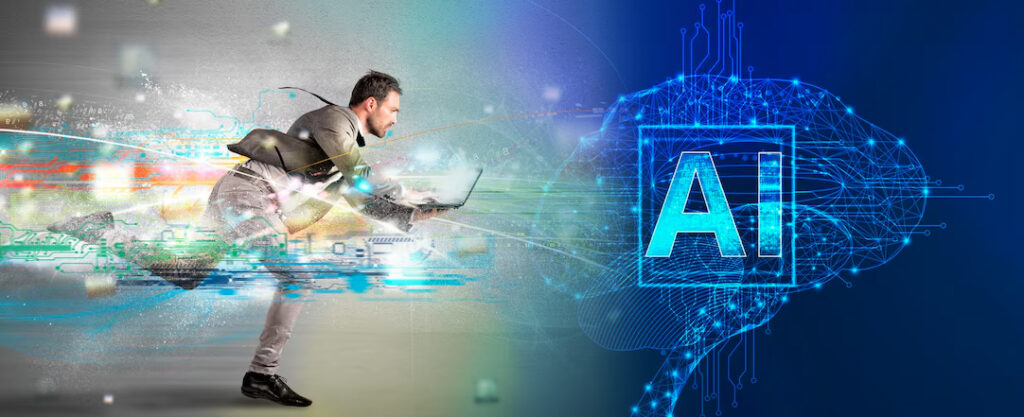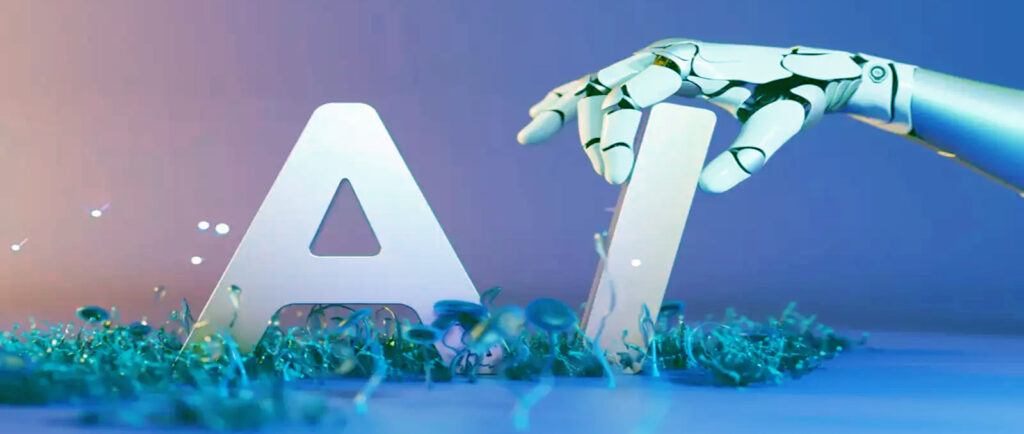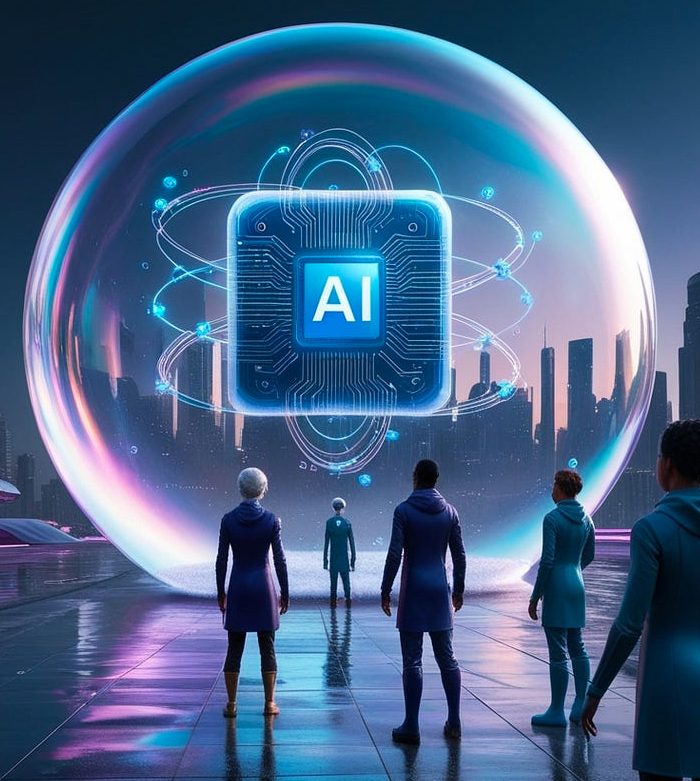
Many people worry that the current AI boom may be just another bubble, much like the dot-com bubble triggered by internet technologies around the year 2000.
Yes—and no.
Yes, because anything that becomes a bubble must first be inflated. And when it’s inflated enough, it will burst. That’s how the stock market works. In the market, anything can become a bubble, either a rumor or a new technology, so long as it can steer investment sentiment. Whether something is good or bad, real or fake, doesn’t matter. It can still become a bubble.
No, because if a technology is fundamentally real, it won’t turn into a bubble just because the stock market turns it into one. The market may be frothy, but the technology itself remains solid.

Internet vs. AI: What’s Different This Time?
Back in 2000, investors were obsessed with dot-com companies. The mania was so intense that all a company needed was a “.com” domain name and a half-decent website. With enough hype and packaging, funding and IPOs followed. But when the wave passed, it was clear who had been swimming naked. And yet Google, Facebook, Amazon—these were born of the internet and thrived during and after the bubble. The ups and downs of the stock market affected shareholders, not the growth of the real tech players.
The same applies to the AI era. The companies with true AI strength are building the future, while greedy investors and speculators inflate bubbles. Yes, some AI stocks are overhyped and will burn hands. But that’s not the AI companies’ fault, their technology is real, and they won’t collapse so easily. Some of these players aren’t even startups, they’re veterans like Google. That said, we’re also seeing a wave of new AI startups emerge—some are wolves in AI clothing, while others are genuinely capable but may still sink in a crowded race.
Identifying the Real Winners
In my view, it’s not hard to identify the real future winners. After nearly three years of LLM (Large Language Model) evolution, only a few true core technology holders remain: OpenAI with ChatGPT, Anthropic with Claude, Google with Gemini, and Elon Musk’s xAI with Grok. These players hold key software-layer AI technologies.
As for hardware-layer core tech, Nvidia stands alone. Its GPUs are unrivaled. Quantum computing may eventually contribute to AI, but it’s still confined to labs and a few years away from commercial reality. Besides, quantum and GPU technologies serve different roles and aren’t direct competitors. Nvidia’s AI dominance is solid as ever.
Big players like Google and Musk-backed ventures enjoy massive ecosystems, capital reserves, and an abundance of data to train AI models—they’re in an enviable position. Even newer players like OpenAI and Anthropic are already extremely valuable due to their technological strengths. If they were ever up for sale, Apple would be drooling at the chance.
Big Tech Gets Bigger
The internet era set the stage for “the big get bigger.” The AI era is amplifying that trend. AI touches nearly every field imaginable. The domains it extends into are almost infinite. Compared to the internet age, the “winner-takes-most” effect is even stronger in the age of AI.
There’s a fundamental difference, though. The internet is public, tech companies built services on it without having to pay a single gatekeeper. Even monopolies like Google Search served a specific function. The browser wars proved this too—Microsoft acquired Netscape but never replicated Windows’ dominance with it. The internet enabled many to bloom, but no one truly controlled it.

Who Are the Real AI Powerhouses?
AI, in contrast, is not public. Its core capabilities are owned by a handful of players. And these capabilities are extremely versatile, they can be deployed with just a simple UI, no need to rely on niche application software. AI models are general-purpose tools. Unlike Google Search, which is limited in function, AI can be used directly by anyone. That’s what gives core AI companies their confidence.
However, the war has only just begun. In search, Google got ahead early, its ecosystem locked users in, and other players like Microsoft’s Bing came too late. But in AI, it’s still unclear who will win.
Because AI’s capabilities are so broad, no single company can cover it all. This opens the door to two new waves of players:
- AI toolmakers – companies building tools like chatbots or creative apps.
- Application companies + AI – firms integrating AI into their existing software (e.g., CRM, ERP).
The second group usually aren’t AI natives. For them, AI is a copilot that makes their software more powerful and useful to clients. Core AI players like OpenAI can’t easily invade this space because these enterprise systems require deep domain expertise and local support. They don’t need Google Search, but they do need AI.
Once integrated, these enterprise apps pay usage fees to AI providers, and even more crucially, AI providers gain access to their data, which increases AI’s learning edge. This is a key reason why core AI companies could become so big. That said, this second group isn’t likely to create massive stock bubbles.

Where the Bubble Brews: The AI Tool Boom
The third group, or the AI tool startups, are the likely bubble makers. With Generative AI still in its early days, core AI firms are focusing on building defensible moats and pushing toward AGI. They don’t have the time to create polished, domain-specific tools. This opens the field to opportunistic founders who whip up clever AI-powered tools—hooked into ChatGPT, Gemini, Claude, DeepSeek, etc. for everything from coding to copywriting. If the idea works and gains users, it explodes in popularity and draws investors in.
But core AI players won’t ignore this forever. These tools run on their models, and building similar tools in-house is a piece of cake. Once they act, they can pull the rug out from under these startups. The toolmakers know their product shelf life is short. Many aim to cash out quickly through IPOs while the hype lasts. But investors may be left holding the bag.
Take Figma Make, for example. It exploded in popularity by helping developers auto-generate UI/UX code. Adobe tried to acquire it, only to be blocked by U.S. regulators. Now it’s rushing to IPO. But Figma Make is powered by Anthropic’s Claude, and newer versions of Claude Code may eventually absorb those same functions. When that happens, Figma Make may no longer have a song to sing.
Other short-lived tools, like the once-hyped AI image generator Runway, serve as cautionary tales. All of this reinforces the winner-takes-all logic of AI: he who owns the core, owns the future.
Conclusion: Real Tech, Not Fake Hype
AI is a real technology. Its usefulness to humanity is beyond debate. Whether the stock market turns it into a bubble, that’s for investors and traders to discern.
The tech is real. The rest is up to the wisdom of the market.
This blog post was contributed by Mr. Teh Hon Seng, CEO of TimeTec Group.
